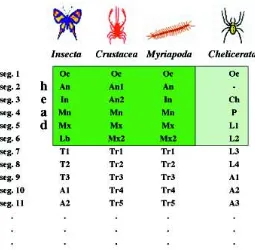Understanding the genetic basis of morphological evolution: the role of homeotic genes in the diversification of the arthropod bauplan
Full text
Figure



Related documents
The decision on commencing high dose calcium channel blocker on these patients will have to depend on a positive haemodynamic response during acute drug trial.. At present this is
This form contains general instructions to the reporter, key words and space for a narrative of the incident, strucrured sections for what happened (with subsections
Aromatic amino acids required for pili conductivity and long-range extracellular electron transport in Geobacter sulfurreducens. This is an open-access article distributed under
Med J Malaysia Vol 54 No 2 June 1999.. especially those with chronic diseases such as hypertension, ishaemic heart disease, diabetes and bronchial asthma. Noncompliance
To understand the temporal epigenetic changes which occur when KSHV infects the lymphocytic compartment, we infected human peripheral blood mononuclear cells (PBMCs) and
Based on available data (unpublished) from the Institute of Radiotherapy and Oncology in Hospital Kuala Lumpur, HCC ranks 9th amongst the ten most common cancers
In contrast to the importance of leptin signaling in epithelial cell defense, in immune cells we found no impact of the R223 mutation on increasing the susceptibility to
Using 16S rRNA amplicon sequencing of 3,237 samples from 42 time series of microbial communities from nine different ecosystems (air; marine; lake; stream; adult hu- man skin,